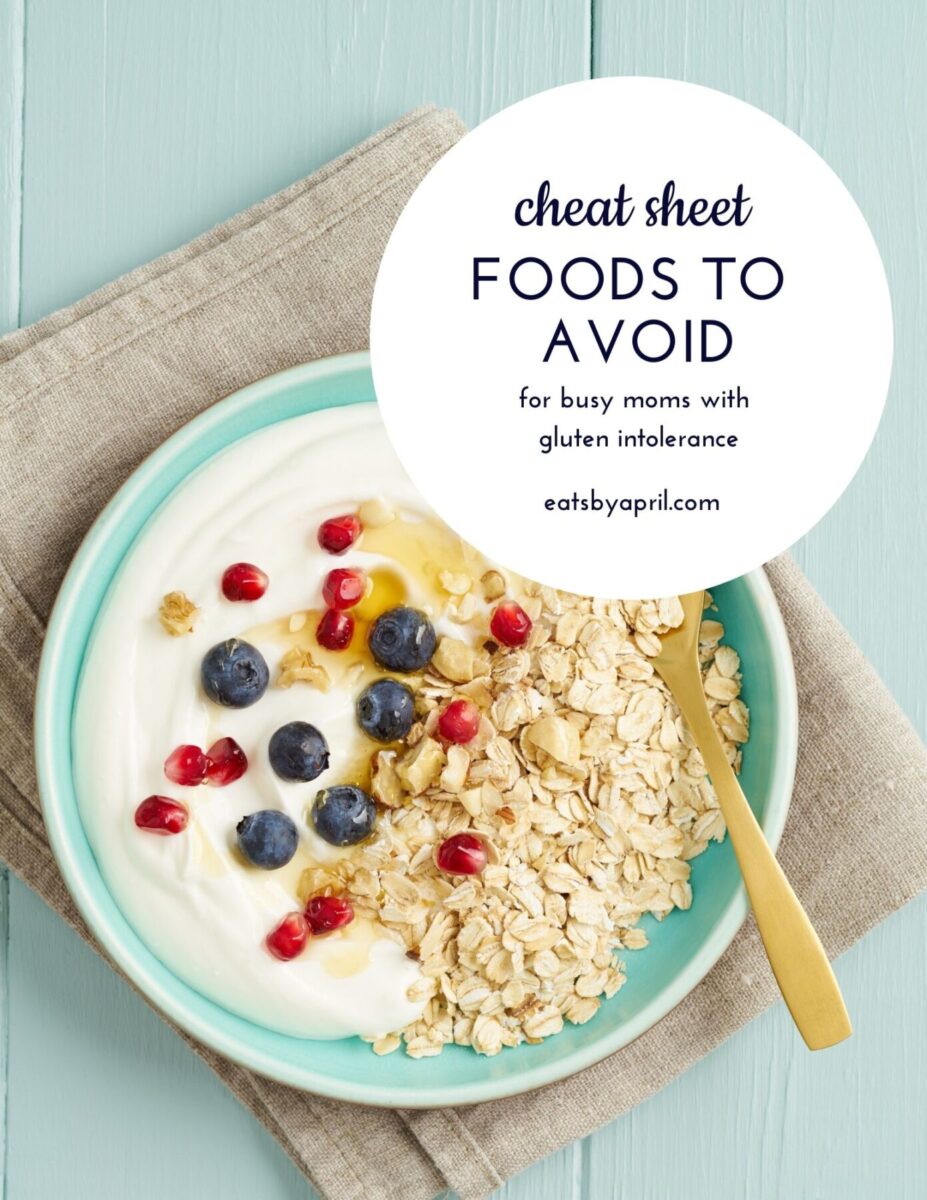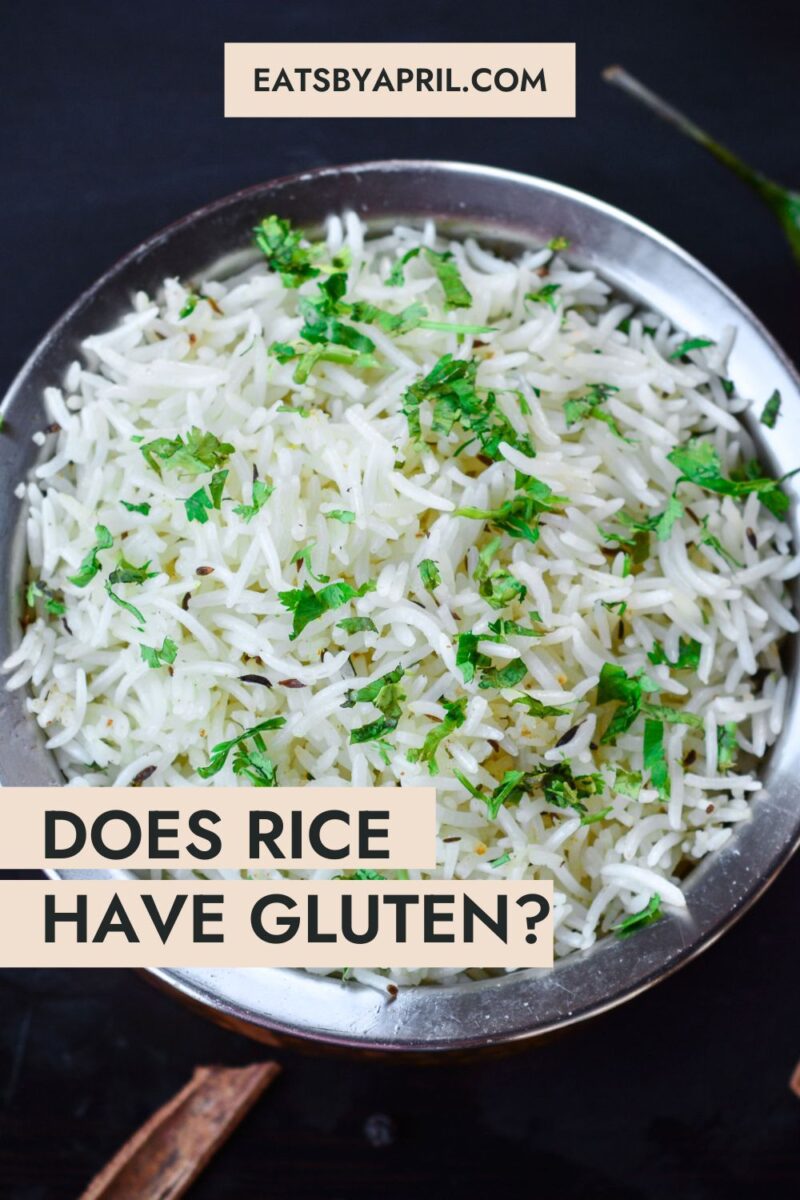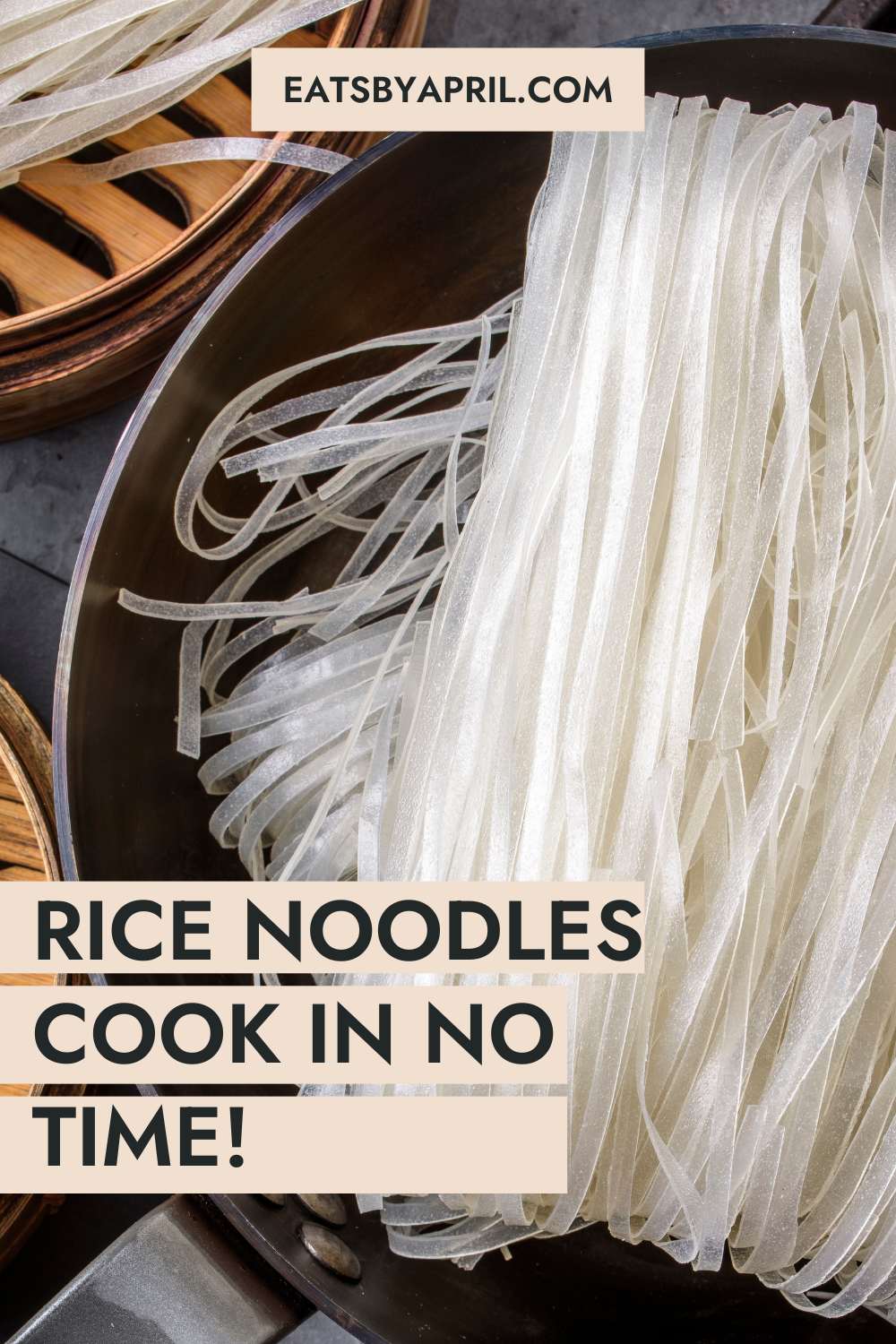You're going gluten-free and need to know: is vermicelli gluten free? Luckily, these thin rice noodles, popular in many different cuisines around the world, are perfect for gluten-free eating! Read on for the full scoop.
Jump to:
- ❓What's gluten?
- 🥘Where is gluten found?
- 🚫Why should you avoid gluten?
- 🍝What are vermicelli noodles?
- ✅Is rice vermicelli gluten free?
- 📝Ingredients in vermicelli rice noodles
- 🙋♀️Nutritional benefits of eating rice noodles
- 🛒Where to buy vermicelli noodles
- 🔪How to cook vermicelli rice noodles
- 🍽️How to serve rice noodles
- 🍑Bottom line on vermicelli noodles
- Want more?
- 💬 Comments
❓What's gluten?
First things first: what's gluten?
Gluten is a mixture of proteins found in wheat, barley, rye. It's what gives dough its elasticity and helps bread and other baked goods maintain their shape.
Think of gluten like a "sticky glue" that holds a lot of our favourite foods together.
You know that satisfying chewiness in bread or the stretchiness in pizza dough? Well, that's all thanks to gluten!
Unfortunately, for some of us, gluten can be a bit of a troublemaker.
For people with celiac disease or a sensitivity to gluten known as non-celiac gluten sensitivity, eating foods containing gluten can cause all sorts of unpleasant symptoms like digestive issues, headaches, or fatigue.
If you think you might be gluten intolerant, check out this post for more on the signs and symptoms of gluten intolerance or gluten sensitivity.

🥘Where is gluten found?
Gluten is found in foods made from or containing wheat, barley or rye ingredients.
Here's a list of the top offenders when it comes to gluten-containing foods:
- Bagels
- Bread
- Cakes
- Cereals
- Cookies
- Crackers
- Muffins
- Oats*
- Pancakes
- Pasta
- Pastries
- Tortillas
- Waffles
*Top tip: For oats, buy brands labeled "gluten-free" Regular oats can contain wheat from cross contamination in the field they’re grown in or during processing.
But it's not just grain and grain products made with wheat, barley and rye that contain gluten.
Gluten can be hiding in the most sneakiest of places! Soups, stews, candies and even beer can contain hidden gluten!
Grab this cheat sheet of foods to avoid so that you can avoid gluten and feel better fast!

🚫Why should you avoid gluten?
If you have celiac disease or any degree of gluten sensitivity, eating gluten can lead to a whole bunch of different health issues and discomfort.
Reactions to gluten can involve the immune system (celiac disease) and cause damage to the lining of the small intestine. This makes absorption of nutrients harder and harder for the body.
People with celiac disease also can suffer with stomach pain, cramps, diarrhea and other digestive issues.
Symptoms of gluten intolerance or gluten sensitivity can range from digestive issues to skin rash to fatigue or "brain fog".
This can make diagnosis hard too.
Gluten intolerance or - "non-celiac gluten sensitivity", does not involve the immune system. But the symptoms of gluten intolerance can overlap with celiac disease and other intestinal conditions like irritable bowl syndrome.

Symptoms of gluten intolerance can include:
- Abdominal Pain
- Anemia
- Anxiety
- Bloating
- Brain Fog
- Dark under-eye circles
- Depression
- Diarrhea
- Headache
- Fatigue
- Muscle & Joint Pain
- Nausea
- Skin Problems
That's why it's important if you have ANY level of gluten sensitivity or gluten intolerance to strictly avoid gluten-containing grains and food products with gluten-containing ingredients.
If you think you're sensitive to gluten, you're gonna want to:
- One, follow a gluten-free diet and
- Two, have a pretty good idea on which foods and ingredients are safe to consume - and which ones aren't
The easiest way to get started with going gluten-free is to cut out any foods made from wheat, barely or rye.
Instead, focus on all the other wonderful foods you can eat - that have no gluten at all!
Get start with eating gluten free eating STAT! Go here and grab your Gluten-Free Diet Plan for Beginners now.

🍝What are vermicelli noodles?
Vermicelli refers to a type of pasta or noodle that is thin and cylindrical in shape.
The term "vermicelli" comes from the Italian word for "little worms". Which although a bit funny to think about when you're eating, kinda makes sense for these slender little noodles!
Vermicelli noodles are use in a whole bunch of different dishes from around the world, including Asian, Middle Eastern, and Mediterranean cuisines.
Just the term "vermicelli" can refer to different types of noodles, depending on the cuisine or culture.

- Rice Vermicelli: Rice vermicelli is made from rice flour and water. It's a popular ingredient in Southeast Asian cuisine, like in stir-fries, soups, and salads. Rice vermicelli is often used in dishes like Pad Thai, Vietnamese pho, and Singapore noodles.
- Wheat Vermicelli: Wheat vermicelli, also known as semolina vermicelli, is made from wheat flour. It's commonly used in Mediterranean and Middle Eastern cuisines. Wheat vermicelli is often used in dishes like kheer (a milk-based dessert), pilaf, and as a topping for salads or soups.
- Glass Vermicelli: Glass vermicelli, also known as cellophane noodles or bean thread noodles, is made from mung bean starch or other starches like potato or sweet potato. It's translucent and has a slightly chewy texture. Glass vermicelli is commonly used in Asian dishes such as stir-fries, spring rolls, and soups and other more traditional vietnamese food.
✅Is rice vermicelli gluten free?
Yes! Rice vermicelli is naturally gluten-free. Rice noodles are made from rice flour and therefore, don't contain any gluten.
In fact, all different types of rice are naturally gluten-free and great choice when you're just going gluten-free.

📝Ingredients in vermicelli rice noodles
The ingredients in rice vermicelli will vary slightly brand to brand, but typically rice vermicelli noodles are made with the following 3 main ingredients:
- Rice Flour: Rice vermicelli is primarily made from rice flour, which is made from ground rice grains.
- Water: Water is added to the rice flour to form a dough or batter that is used to create the vermicelli noodles.
- Starch: Some rice vermicelli brands may add starch, such as tapioca starch or cornstarch, to improve the texture and consistency of the noodles.
How to know for sure what those long, thin noodles are made from? Check that ingredient list on the package the rice noodles came in. Look for any ingredients that may mean that gluten-containing ingredients were used.
Again, you should be fine if you're looking at a package of just plain white rice noodles but if you pick up anything that's flavoured or has additional seasonings for example, pay closer attention.
Sources of gluten can be super sneaky in getting in there! Even barley can be used to make flavourings in some food products.

🙋♀️Nutritional benefits of eating rice noodles
Naturally gluten-free rice noodles are a great option to add to your gluten free diet!
Depending on the brand and product, the nutritional information for vermicelli noodles will vary a bit but generally, they're a healthy option.
Nutrition information per 100 grams:
- Calories: ~350-380 calories
- Carbohydrates: ~80-85 grams
- Protein: 3-4 grams
- Fat: Minimal fat content, usually less than 1 gram
- Fiber: Low in fiber, typically less than 1 gram
- Sodium: Varies, but generally low, ranging from 5-20 milligrams

🛒Where to buy vermicelli noodles
Rice noodles can be found in most large grocery stores across the United States and Canada. What's great is that you don't have to go to a speciality store to find them! Look in the rice and / or South Asian section of your local grocery store, if they have one.
If you can't find them, just ask. Typically they're sold dry, in clear, small, square or rectangular packages.
🔪How to cook vermicelli rice noodles
Most rice noodle packages will come with the cooking instructions on them so follow those to be sure. Here's how they're typically cooked:
- First, put a pot of water on the stove to boil.
- Once the water is boiling, add the vermicelli noodles to the pot. Give them a gentle stir so they don't stick together.
- Follow the package instructions for the cooking time, but usually, vermicelli noodles only take around 3-5 minutes to cook. Keep an eye on them and give them a taste to check for doneness. You want them to be tender but still have a slight bite, which is "al dente". (Means, of the tooth!)
- When the noodles are cooked through, turn off the heat and drain them using a colander. Rinse them under cold water to stop the cooking process and prevent them from sticking together.

Now the noodles are ready to use! Whether it's for a stir-fry, salad or soup - rice noodles would work great.
- If you're making a stir-fry, heat up a pan with some oil, throw in your favourite veggies and protein, add the cooked vermicelli noodles, and stir-fry everything together. Season it with your preferred sauces and spices, and voila!
- If you're going for a salad or noodle bowl, you can toss the cooked noodles with fresh vegetables, herbs, and a peanut-forward dressing. Add some protein like grilled chicken or tofu, and you've got yourself a gluten-free and healthy meal
See below for more ideas on how to eat rice noodles.
🍽️How to serve rice noodles
One of the best parts of rice noodles are how versatile they are.
So many options to eat these delicious noodles. Like actual rice, they're blank canvas and take on the flavours of what you add to them.
Here's a few yummy ways to use rice noodles:
- 🥘Stir-fry: Cook the rice noodles according to the package instructions and then stir-fry them with vegetables, protein (such as chicken, shrimp, or tofu), and your choice of sauce or seasoning. Add gluten-free soy sauce, oyster sauce, or a stir-fry sauce for added flavour. Check out this recipe for Healthy Chicken Stir Fry!
- 🥡Pad Thai: My husbands favourite! Make a classic Pad Thai dish by stir-frying rice noodles with shrimp, scrambled eggs, bean sprouts, green onions, and a tangy (gluten-free) Pad Thai sauce. Top with crushed peanuts, cilantro and lime wedges.
- 🥣Pho: Create a delicious Vietnamese pho soup by soaking the rice noodles in hot water until soft and then adding them to a hot beef, chicken or vegetable broth along with sliced beef or chicken, fresh herbs, bean sprouts, lime juice, and chili sauce. So EASY. And absolutely yum. Make sure your chicken broth is gluten-free. Not all chicken broths are free of gluten!
- 🥗Cold noodle salad: Use rice noodles in your meal prep for the week in a cold noodle salad! Make the rice noodles according to the package instructions and then rinse them with cold water to cool them down. Toss the cooled noodles with fresh vegetables, such as cucumber, carrot, bell peppers, and herbs. Drizzle with a dressing made from gluten-free soy sauce, sesame oil, lime juice, and honey.
- 😋Spring rolls: Use softened rice paper wrappers to roll up rice noodles along with lots of fresh veggies, herbs, and protein (such as shrimp, chicken, or tofu). Dip the spring rolls in a peanut sauce or a sweet chili sauce.
- 🥬Noodle soups: Add cooked rice noodles to a flavorful broth, such as chicken, beef, or vegetable broth. Customize your soup by adding sliced meats, fresh vegetables, and herbs.
- 🥣Noodle bowls: Create a nourishing bowl by combining rice noodles with your favourite toppings such as grilled meats, steamed vegetables, pickled vegetables, sesame seeds, and a drizzle of sauce or dressing.

🍑Bottom line on vermicelli noodles
These super thin rice noodles found in popular dishes around the world are naturally gluten-free! Made mainly from rice flour, vermicelli rice noodles are a really good choice to include in your gluten free diet.
They can replace regular pasta and be served hot in a large bowl with lean protein and veggies. Or enjoy the thin noodles in a cold noodle salad with a peanut sauce. They cook quickly and practically have no fat or sugar.
Whichever way you include them, vermicelli rice noodles are a great choice! Give them a try today and let me know what you think in the comments below😄
~April
Want more?
Sign-up to get all the healthy and gluten-free recipes delivered straight to your inbox each week.
"*" indicates required fields





Comments
No Comments